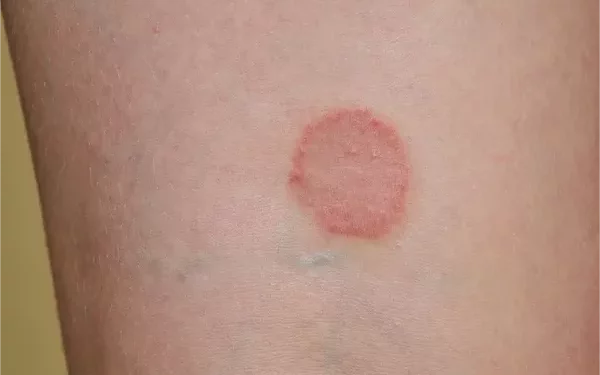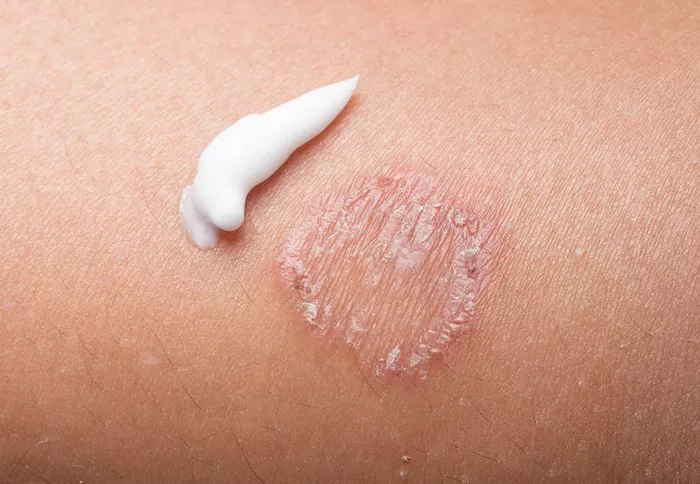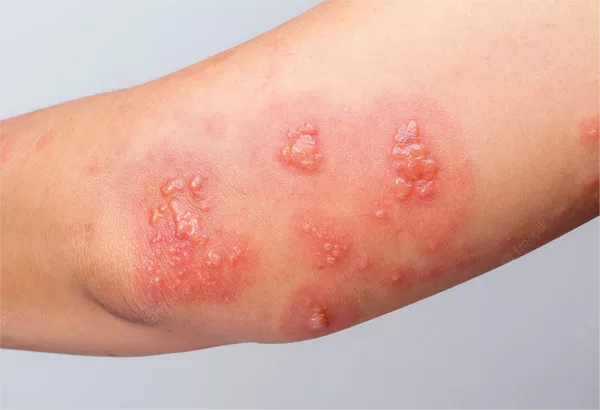Ringworm, despite its name, is not a worm but a fungal infection that affects the skin. It can occur anywhere on the body, including the scalp, feet, and nails. The infection is highly contagious and can be spread through direct contact with an infected person, animal, or object. Ringworm can cause significant discomfort, including itching and inflammation. To effectively treat this condition, topical antifungal creams are often the first line of defense. In this article, we will explore the best topical creams for ringworm, how they work, their effectiveness, and tips for prevention.
Understanding Ringworm
What is Ringworm?
Ringworm is caused by a group of fungi known as dermatophytes. The infection gets its name from the characteristic ring-shaped rash that appears on the skin. It can occur in various forms, depending on the area affected:
Tinea corporis: Ringworm on the body
Tinea pedis: Athlete’s foot (ringworm on the feet)
Tinea capitis: Ringworm on the scalp
Tinea cruris: Jock itch (ringworm in the groin area)
SEE ALSO: What Causes Ringworm in People?
Symptoms of Ringworm
The symptoms of ringworm can vary based on the location of the infection but generally include:
- A red, circular rash with clear skin in the center
- Itching and irritation
- Scaling or flaking skin
- Hair loss (in the case of scalp infections)
How Topical Creams Work
Mechanism of Action
Topical antifungal creams work by inhibiting the growth of the fungi that cause ringworm. They can either kill the fungi directly or prevent their reproduction. Most topical creams target the cell membranes of the fungi, causing them to break down and ultimately die.
Types of Topical Antifungal Creams
There are several classes of antifungal creams that are effective against ringworm:
Azoles: These inhibit the synthesis of ergosterol, a critical component of fungal cell membranes.
Allylamines: These also inhibit ergosterol synthesis but do so at a different step in the process.
Benzylamines: Similar to allylamines, they disrupt fungal growth by inhibiting ergosterol synthesis.
Other antifungals: These include different mechanisms, such as inhibiting cell wall synthesis.
Best Topical Creams for Ringworm
Here are some of the most effective topical creams for treating ringworm:
1. Clotrimazole Cream
Overview
Clotrimazole is a widely used topical antifungal cream that is effective against a range of fungal infections, including ringworm. It is available over the counter and is often recommended for mild to moderate infections.
How to Use
- Clean the affected area with soap and water and pat dry.
- Apply a thin layer of clotrimazole cream to the infected area twice daily.
- Continue using the cream for at least two weeks, even if the symptoms improve.
Effectiveness
Clotrimazole is effective in treating tinea corporis and tinea pedis. Most patients see improvement within a few days, but it is essential to complete the full course to prevent recurrence.
2. Miconazole Cream
Overview
Miconazole is another popular antifungal that is effective against ringworm. It is available in various forms, including creams and powders.
How to Use
- Clean and dry the affected area before applying.
- Apply miconazole cream to the area twice daily.
- Use for at least two weeks to ensure the infection is fully cleared.
Effectiveness
Miconazole works well for tinea corporis and tinea pedis. Many users report rapid relief from itching and irritation within a few days.
3. Terbinafine Cream
Overview
Terbinafine is an allylamine antifungal that is effective against various dermatophytes. It is particularly effective for tinea pedis and tinea corporis.
How to Use
- Wash and dry the affected area thoroughly.
- Apply a thin layer of terbinafine cream once or twice daily, as directed by your healthcare provider.
- Continue treatment for one to two weeks.
Effectiveness
Terbinafine often provides quicker results than other topical treatments. Many patients experience improvement within a few days, and it is known for its low recurrence rate.
4. Ketoconazole Cream
Overview
Ketoconazole is a broad-spectrum antifungal that can treat various fungal infections, including ringworm. It is available by prescription and is often recommended for more resistant infections.
How to Use
- Clean the infected area before application.
- Apply ketoconazole cream once or twice daily.
- Use for at least two weeks to ensure complete eradication of the fungus.
Effectiveness
Ketoconazole is particularly effective for tinea corporis and tinea capitis. It is also beneficial for individuals with compromised immune systems or recurrent infections.
5. Econazole Cream
Overview
Econazole is another azole antifungal cream used to treat ringworm and other superficial fungal infections. It is available by prescription.
How to Use
- Clean the area thoroughly before applying.
- Apply a thin layer of econazole cream once daily.
- Continue for two to four weeks.
Effectiveness
Econazole is effective against a range of fungal infections, including those resistant to other treatments. Users often notice improvement within a few days.
Considerations When Using Topical Creams
1. Follow Instructions
Always follow the instructions provided with the cream or as directed by your healthcare provider. Applying more cream than recommended does not speed up healing and can lead to skin irritation.
2. Clean the Affected Area
Before applying any topical antifungal, make sure to clean and dry the infected area. This enhances the cream’s absorption and effectiveness.
3. Avoid Sharing Personal Items
Since ringworm is contagious, avoid sharing personal items like towels, combs, or clothing until the infection is fully treated.
4. Monitor for Side Effects
While most topical antifungals are safe, some individuals may experience side effects like burning, itching, or redness. If these persist or worsen, discontinue use and consult a healthcare professional.
When to See a Doctor
If the infection does not improve after using over-the-counter treatments for two weeks or if it worsens, it’s essential to seek medical advice. You may require a prescription-strength topical antifungal or even oral antifungal medication for more severe cases.
Preventing Ringworm
1. Maintain Good Hygiene
Regular handwashing and bathing can help prevent the spread of ringworm. Ensure to wash your hands after contact with potentially infected individuals or animals.
2. Avoid Sharing Personal Items
Do not share items like towels, clothing, or sports gear. These can carry the fungi responsible for ringworm.
3. Wear Breathable Clothing
Choose clothing made from breathable fabrics, especially in areas prone to sweating. This helps reduce the risk of fungal infections.
4. Keep Your Skin Dry
Fungi thrive in warm, moist environments. Keeping your skin dry, especially in areas like the feet and groin, can help prevent ringworm.
5. Treat Pets
If your pets are infected with ringworm, they should be treated promptly. Regularly check them for signs of fungal infections and consult a veterinarian if necessary.
Conclusion
Ringworm can be uncomfortable and inconvenient, but effective treatment is available. Topical antifungal creams like clotrimazole, miconazole, terbinafine, ketoconazole, and econazole are among the best options for treating this fungal infection. Always follow usage guidelines and consult a healthcare provider if symptoms persist or worsen. With proper treatment and prevention strategies, you can effectively manage and prevent ringworm, ensuring healthier skin for the future.
Related topics:



























